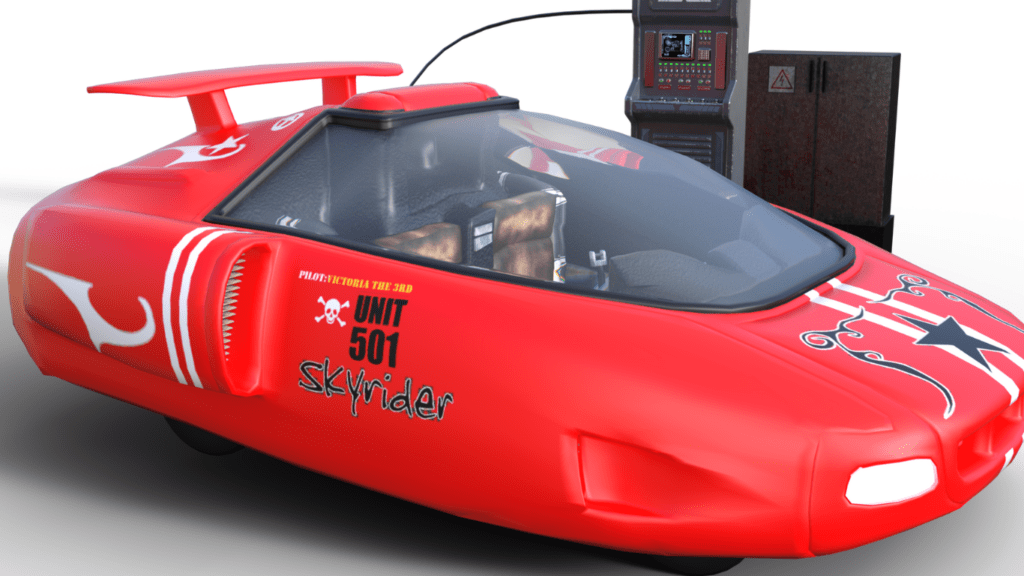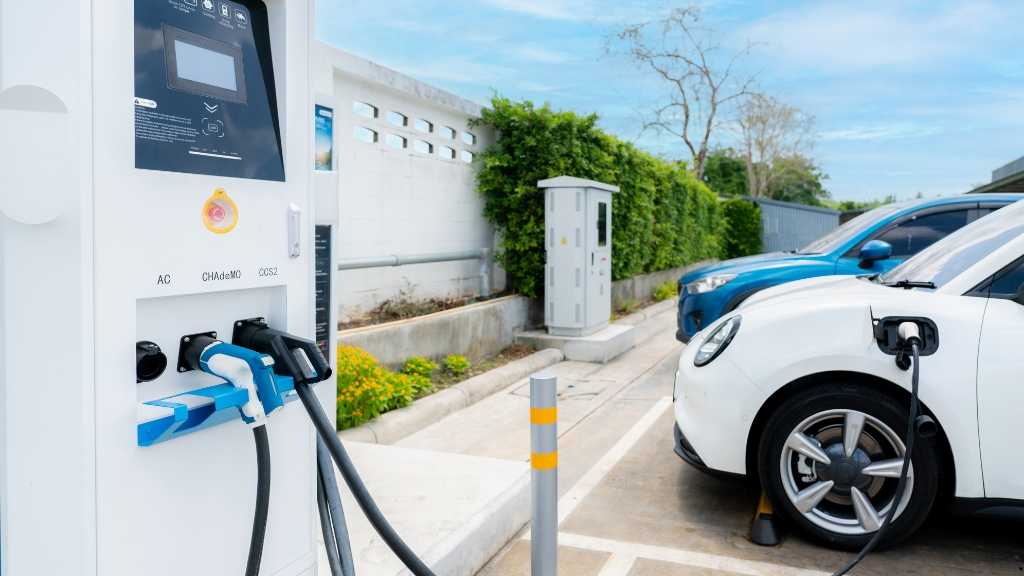Advances in Battery Technology
Significant progress in battery technology has been crucial to the evolution of electric vehicles (EVs). Innovations in battery composition and performance are transforming how these vehicles are powered and operated.
Solid-State Batteries
Solid-state batteries present a notable advancement over traditional lithium-ion batteries. They utilize solid electrolytes instead of liquid ones, offering several key advantages.
- Higher Energy Density: Solid-state batteries can store more energy. For instance, they provide energy densities of up to 500 Wh/kg compared to 250 Wh/kg for lithium-ion batteries. This means longer driving ranges for EVs.
- Improved Safety: Unlike liquid electrolytes, solid electrolytes reduce the risk of leaks and fires. They enhance the overall safety profile of the vehicle.
- Faster Charging Times: These batteries can handle higher current levels during charging, decreasing the time required to recharge. As a result, they minimize downtime for EV users.
Fast-Charging Capabilities
Fast-charging technologies are significantly improving the practicality of EVs. Advances in charging infrastructure and battery chemistry have reduced charging times considerably.
- DC Fast Charging Stations: High-power DC fast chargers deliver up to 350 kW of power. For example, a 100 kWh battery can be charged to 80% capacity in just 20-30 minutes.
- Enhanced Battery Chemistry: New battery formulations, such as silicon anode batteries, support faster charging without compromising the longevity of the battery. These formulations enable multiple rapid charge cycles over the battery’s lifespan.
- Bidirectional Charging: Some fast chargers now offer bidirectional charging, allowing EV batteries to supply power back to the grid. This not only supports grid stability but also provides vehicle-to-home (V2H) capabilities.
These breakthroughs in battery technology are fundamental to increasing the adoption and efficiency of electric vehicles.
Enhanced Motor Efficiency

In electric vehicles, motor efficiency plays a critical role in enhancing performance and range. Recent advances in motor technology have contributed to more efficient, powerful, and reliable electric motors.
Permanent Magnet Synchronous Motors
Permanent Magnet Synchronous Motors (PMSMs) have become a leading choice for modern EVs. PMSMs use rare earth magnets like neodymium to create a constant magnetic field. This setup results in higher torque and efficiency, especially at lower speeds. PMSMs are known for their compact size due to high power density, which optimizes space in EV designs. For instance, Tesla employs PMSMs in its Model 3 to achieve impressive performance metrics.
Induction Motors
Induction motors, while less efficient than PMSMs, offer unique advantages that make them suitable for specific applications. These motors use electromagnetic induction to generate motion, eliminating the need for permanent magnets. This makes induction motors more cost-effective and less reliant on rare materials. Induction motors excel in durability and have a robust design, which makes them ideal for heavy-duty EVs, including trucks and buses. They maintain consistent performance over a wide range of speeds, providing versatility for various driving conditions. Tesla’s Model S famously uses an induction motor for its rear-wheel drive, demonstrating the technology’s potential.
Autonomous Driving Integration
Autonomous driving integration is transforming the EV landscape. This section explores key components like Advanced Driver-Assistance Systems (ADAS) and Vehicle-to-Everything (V2X) communication.
Advanced Driver-Assistance Systems (ADAS)
ADAS technologies enhance driving safety and convenience. ADAS incorporates sensors, cameras, and LiDAR to provide real-time data for improved decision-making. For example, Tesla’s Autopilot and GM’s Super Cruise use ADAS to enable partially autonomous driving, reducing driver fatigue and enhancing road safety. Key features include adaptive cruise control, lane-keeping assistance, and automatic emergency braking. These systems detect potential hazards and adjust vehicle behavior accordingly.
Vehicle-to-Everything (V2X) Communication
V2X communication enables vehicles to interact with infrastructure, other vehicles, and even pedestrians. This integration optimizes traffic flow and enhances safety. For instance, systems like Audi’s V2I communication notify drivers of upcoming traffic signal changes, allowing smoother driving. V2V communication exchanges data between vehicles to prevent collisions and improve route efficiency. V2P communication alerts drivers about pedestrians to avoid accidents. These applications enhance the driving experience and ensure safer, connected roadways.
Integrating these technologies in EVs not only advances autonomous driving but also strengthens the overall efficiency and safety of electric vehicles.
Lightweight Materials
Optimizing the materials used in electric vehicles (EVs) can significantly enhance their performance, efficiency, and range. Let’s explore the latest advances in lightweight materials that contribute to these improvements.
Carbon Fiber Composites
Carbon fiber composites offer exceptional strength-to-weight ratios, making them ideal for EVs. These materials are 5 times stronger and 2 times stiffer than steel, yet they are much lighter. Manufacturers use carbon fiber in various vehicle parts like body panels, chassis components, and interior elements to reduce overall vehicle weight. For example, BMW’s i3 extensively utilizes carbon fiber-reinforced plastic (CFRP), contributing to its sleek design and impressive efficiency. Employing carbon fiber composites results in lighter vehicles, which require less energy to accelerate and maintain speed, thereby extending the EV’s range and enhancing battery life.
Advanced Aluminum Alloys
Advanced aluminum alloys bring a balance of strength, lightness, and corrosion resistance to EV manufacturing. These alloys are 2.5 times lighter than steel while maintaining high durability. Automakers like Tesla use aluminum extensively, particularly in models like the Model S and Model X, for parts such as the chassis, body structure, and suspension components. Advanced aluminum alloys improve vehicle agility and safety without sacrificing sturdiness. The lighter weight translates to better energy efficiency, allowing EVs to travel further on a single charge. In addition, aluminum’s recyclability aligns with the sustainable goals of electric mobility, reducing environmental impact without compromising performance.
Lightweight materials like carbon fiber composites and advanced aluminum alloys play pivotal roles in the evolution of electric vehicle technology. They not only enhance vehicle performance but also contribute to extending the driving range, promoting the broader adoption of EVs.
Sustainable Manufacturing Practices
Sustainable practices in manufacturing are essential to achieving the environmental benefits of electric vehicles (EVs). By focusing on recycling and energy-efficient production, the EV industry can minimize its environmental footprint and promote long-term sustainability.
Recycling and Reusing Materials
Recycling and reusing materials reduce waste and conserve resources. Many EV manufacturers now implement closed-loop systems to recycle batteries, metals, and plastics. For example, Nissan recycles old batteries to create new energy storage systems, contributing to a circular economy. Tesla’s Gigafactory aims to achieve zero waste by reprocessing scrap materials and reusing them in new battery production. These initiatives curb environmental impact and lower production costs, supporting sustainable manufacturing.
Energy-Efficient Production Techniques
Energy-efficient production techniques in EV manufacturing lessen carbon emissions and operational costs. Automakers, like BMW and Nissan, use renewable energy sources, such as wind and solar power, to run their plants. BMW’s Leipzig plant, producing the i3, operates on 100% wind power. Additionally, manufacturers employ advanced robotics and automation to enhance precision and minimize resource use. By using techniques like 3D printing, companies reduce material waste and energy consumption, ensuring a more sustainable production process.




